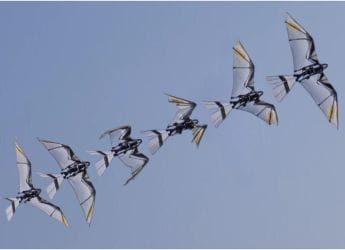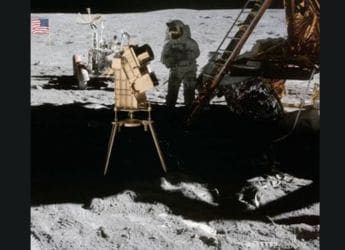- Home
- Science
- Science News
- NASA Prepares 2025 Carruthers Mission to Explore Earth’s Hidden Hydrogen Halo
NASA Prepares 2025 Carruthers Mission to Explore Earth’s Hidden Hydrogen Halo
Launching in 2025, NASA’s Carruthers Geocorona Observatory will image Earth’s faint hydrogen halo from a million miles away, helping protect satellites, guide crewed missions, and explain how planets lose water to space.

Photo Credit: NASA
NASA is preparing the Carruthers Geocorona Observatory
To observe the thin hydrogen halo or geocorona of the Earth, NASA is preparing the Carruthers Geocorona Observatory. The observatory will start with NOAA and NASA partner payloads as early as September 2025, capturing the light of ultraviolet light that is produced by hydrogen atoms that constitute the outermost layer of our atmosphere. This is a very elusive area that should be understood as a form of protecting satellites, planning manned missions, and also how planets lose water to space.
Why the Geocorona Matters
According to NASA, the geocorona is approximately 300 miles (480 km) above the surface of the Earth and could be as close to the moon as halfway. Hydrogen atoms in this case reflect sunlight into a faint ultraviolet light that was initially photographed in Apollo 16. This boundary reacts with the solar radiation and charged particles, which affects the functioning of spacecrafts, and also exposes the manner in which the Earth maintains its atmosphere in comparison to other planets like Mars. The process of hydrogen escape also has an informational impact on the search for habitable exoplanets.
Mission Plan and Technology
Named for pioneering astrophysicist George Carruthers, the 240-kilogram spacecraft carries two ultraviolet imagers: a wide-field camera to map the geocorona's vast extent and a near-field sensor for fine detail. It will travel to the Sun-Earth Lagrange Point 1, about a million miles sunward, sharing a Falcon 9 launch with NASA's IMAP and NOAA's SWFO-L1 missions. After a four-month cruise and checkout, a two-year science phase will begin in early 2026. By coupling precise ultraviolet measurements with solar-wind monitoring, the mission will reveal how solar activity shapes Earth's invisible halo.
For the latest tech news and reviews, follow Gadgets 360 on X, Facebook, WhatsApp, Threads and Google News. For the latest videos on gadgets and tech, subscribe to our YouTube channel. If you want to know everything about top influencers, follow our in-house Who'sThat360 on Instagram and YouTube.
Related Stories
- Samsung Galaxy Unpacked 2025
- ChatGPT
- Redmi Note 14 Pro+
- iPhone 16
- Apple Vision Pro
- Oneplus 12
- OnePlus Nord CE 3 Lite 5G
- iPhone 13
- Xiaomi 14 Pro
- Oppo Find N3
- Tecno Spark Go (2023)
- Realme V30
- Best Phones Under 25000
- Samsung Galaxy S24 Series
- Cryptocurrency
- iQoo 12
- Samsung Galaxy S24 Ultra
- Giottus
- Samsung Galaxy Z Flip 5
- Apple 'Scary Fast'
- Housefull 5
- GoPro Hero 12 Black Review
- Invincible Season 2
- JioGlass
- HD Ready TV
- Laptop Under 50000
- Smartwatch Under 10000
- Latest Mobile Phones
- Compare Phones
- Xiaomi 17
- Xiaomi 17 Pro Max
- Xiaomi 17 Pro
- Xiaomi 15T Pro
- Xiaomi 15T
- OPPO A6 Pro 4G
- Vivo V60 Lite 5G
- Samsung Galaxy A17 4G
- HP OmniBook X Flip 14 (B91BSPA)
- Acer Nitro V 16S (2025)
- Xiaomi Pad 8
- Xiaomi Xiaomi Pad 8 Pro
- Xiaomi Smart Band 10 Glimmer Edition
- Xiaomi Watch S4 41mm
- Xiaomi Xiaomi TV S Pro Mini LED 55 2026
- Xiaomi TV S Pro Mini LED 65 2026
- Asus ROG Ally
- Nintendo Switch Lite
- Haier 1.6 Ton 5 Star Inverter Split AC (HSU19G-MZAID5BN-INV)
- Haier 1.6 Ton 5 Star Inverter Split AC (HSU19G-MZAIM5BN-INV)

















